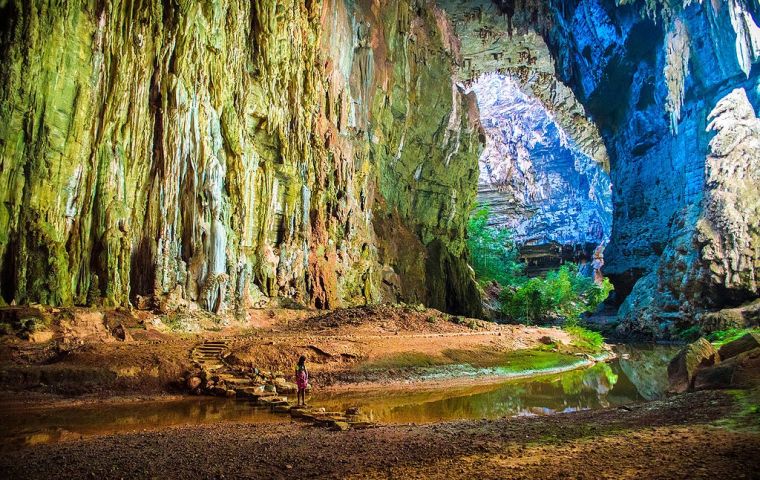MercoPress. South Atlantic News Agency
Peruaçu Caves in Brazil recognized as UNESCO World Heritage Site
 Despite its value, the park only received 14,600 visitors in 2024
Despite its value, the park only received 14,600 visitors in 2024 The Peruaçu Caves in Brazil's Minas Gerais State have been designated a UNESCO World Heritage Site, recognized for their “exceptional natural beauty,” geological significance, and rich prehistoric rock art.
The Peruaçu Caves National Park spans approximately 56,500 hectares and is home to colossal caves, some up to six kilometers long, making them among the largest underground spaces globally. The park is a unique ecological intersection of the Cerrado, Caatinga, and Atlantic Forest biomes, harboring over 2,000 plant and animal species, including many endangered ones.
The region's canyons and caves are adorned with prehistoric rock art, indicating human habitation for at least 12,000 years. Early inhabitants were hunters, and later evidence suggests the cultivation of crops like corn, tobacco, and cotton.
The Xacriabás indigenous people named the valley “Peruaçu,” meaning “big hole,” referring to the massive limestone formations, the Chico Mendes Institute for Biodiversity Conservation (ICMBio), which is in charge of Brazilian national parks, explained.
Beyond its ecological and historical significance, the Peruaçu Caves boast impressive geological features. The park contains nearly 500 caves, many exceeding 100 meters in height, with monumental entrances like the famous Caverna do Janelão.
Inside, visitors can find what is believed to be the world's largest stalactite, known as the “Dancer's Leg,” measuring 28 meters. The cave walls serve as a gallery of prehistoric art, featuring diverse rock paintings in various pigments.
The inclusion of Peruaçu Caves on UNESCO's list brings Brazil's total World Heritage sites to 25, alongside other iconic locations like the Iguaçu Falls. This designation is expected to significantly boost the park's international visibility and promote sustainable tourism.
Despite its immense value, the park currently receives very few visitors (only 14,600 in 2024), making it one of the least visited natural parks in Brazil. Authorities hope this new recognition will encourage more people to experience its unique natural and cultural treasures while ensuring its long-term preservation.
Among the 30 nominations examined this year by the World Heritage Committee, meeting in Paris until Sunday, were castles of King Ludwig II of Bavaria, as well as cultural landscapes in Cameroon and Malawi.




Top Comments
Disclaimer & comment rulesCommenting for this story is now closed.
If you have a Facebook account, become a fan and comment on our Facebook Page!